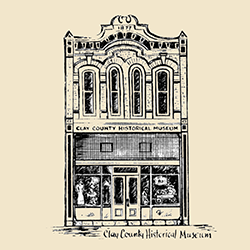Ole Anderson
On his enlistment date Ole Andreas Anderson was 28 years old; it was the 21st of May in the first year of the war, 1861. He was a commissioned officer in Company D, Iowa 3rd Infantry Regiment by June of that year and mustered out on August 16th of the following year due to disability. In his case the disability was a bullet through his temple that lodged in the back of his head for the remainder of his life.
Ole was born in Loken, Vestre Slidre, Oppland, Norway in 1833, coming to America in 1850 at the age of 17. He served both before and after his arrival in this county. Working in a general store in Decorah, Iowa prior to volunteering to serve in the war, his first major engagement was the fierce Battle of Liberty/Blue Mills Ferry. Suffering his life-threatening wound, he lay on the battle site after the Union troops retreated and the Confederate forces had stripped him of all but his pants. Company D was able to reclaim him the next day and he lay unconscious for three weeks, two reportedly in Jewell Hall on the William Jewell campus, never to fully recover his former health.
Returned to Decorah, he married his fiancé, Mari Nilsdr Katterud, four years his junior also from Norway in July of 1862. The 1870 US Census lists him as “No occupation, wounded soldier.” Mari took care of him until his death in 1910 and received a widow’s pension until her death eight years later.
Captain Logan Enyart
A Kentuckian born in 1831, the 11-member Enyart family moved to Daviess County Missouri when Logan was four years old. After he married, he farmed until 1861 when he served as Captain in the Missouri State Guard. He enlisted with his brother-in-law, Richard Chiles at Camp Price near Springfield in Gates’ Regiment of the Missouri Cavalry for 12 months. By 1862 he was in the 1st and 3rd Consolidated Cavalry in Company B, then ended the year in Company G of the 1st dismounted Cavalry, Bowen’s Division, Army of the West.
Enyart fought in the battles of Liberty/Blue Mills, Missouri, September 1861; Lexington, Missouri, September 1861; Bentonville, Arkansas, February 1862; Elk Horn (Pea Ridge) Arkansas, March 1862; Luka, Mississippi, September 1862; Corinth, Mississippi, October 1862; Baker’s Creek, Mississippi, May 1863; Vicksburg, Mississippi, July 1863; Farmington, Tennessee, October 1863; New Hope Church, Georgia, May 1864; Franklin, Tennessee, November 1864; and Sugar Creek, Tennessee, December 1864.
Enyart was wounded at Elk Horn in his left arm early in 1862, then at Baker’s Creek in May 1863 in his left eye. Captured in July and sent to the Military Prison at Louisville, Kentucky, he was paroled in July 1863 at Vicksburg with an oath not to serve any further although he was part of a prisoner exchange. He subsequently changed his mind, fighting in the battles at Sugar Creek and New Hope Church before being captured at the Battle of Franklin in Tennessee in November of 1864. Sent to Johnson’s Island, Ohio as prisoner of war, Logan signed the Oath of Allegiance and was released on June 16, 1865, to return home.
After the war he resettled in Nebraska and had a successful career as a banker. One of his war wounds won him a $10 bet on who could stare at the sun the longest. He won due to having a glass eye, the original having been lost in battle in 1863. He married for a second time in 1891 after losing his first wife and young son. Logan died in 1912 at the age of 81 a wealthy man, as a bank president and real estate tycoon.
Chery Carr Holtman, curator, Clay County Museum
